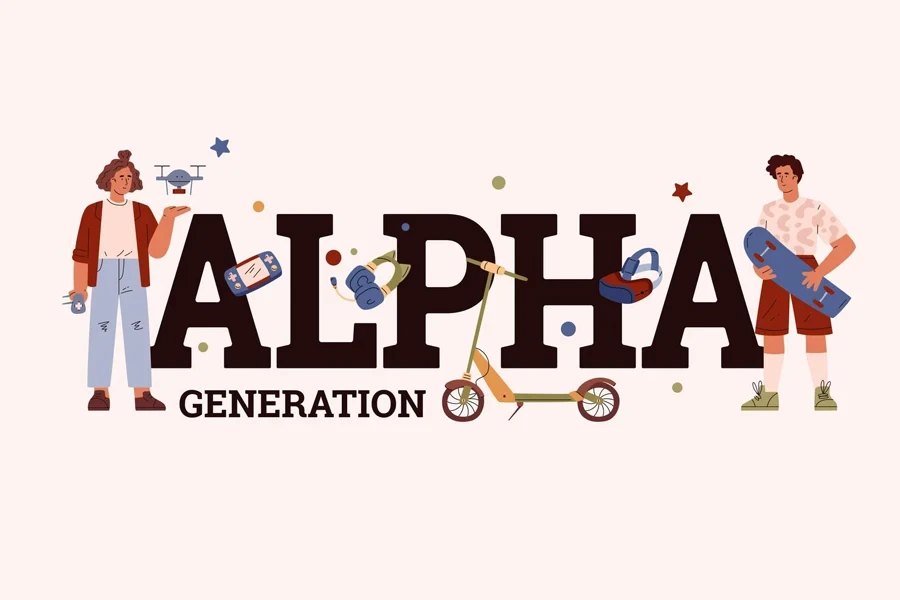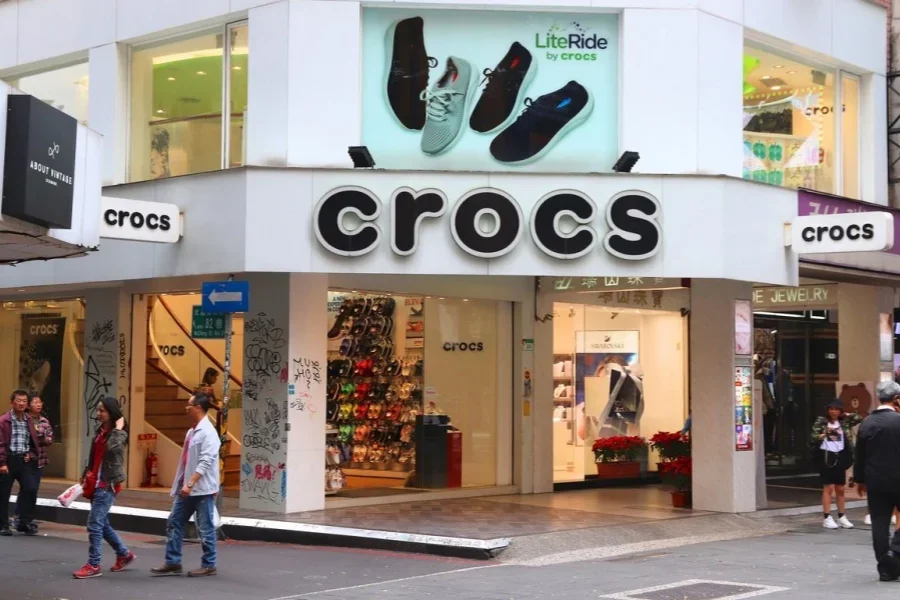How Brands Can Win Over the First True “Phygital” Generation
In 2023, an 11-year-old Zalpha named Lily from Ohio made headlines by negotiating a 20% discount on her family’s Disneyland trip—during a TikTok Live session with the park’s customer service team. While adults chuckled at the viral clip, marketers saw a seismic shift: Zalphas, the generation straddling Gen Z and Alpha (born 2008–2014), aren’t just influencing purchases—they’re rewiring capitalism itself. Armed with Roblox avatars, TikTok humor, and an uncanny ability to sniff out inauthenticity, this cohort commands a projected $5.4 trillion economic footprint by 2029. Forget “kids these days”—this is a masterclass in hybrid reality consumption. Let’s explore how they’re flipping the script.
Table of Contents
The Rise of the Mini-Moguls: Zalphas’ Economic Firepower
Content Wars: Why “Brain Rot” Is the New Brand Literacy
Phygital Playgrounds: Where Fortnite Skins Meet School Cafeterias
Values with Vibe Checks: The Paradoxical Activists
Survival Toolkit: Three Rules for Zalpha Domination
1. Be the Sidekick, Not the Hero
2. Build Parallel Universes
3. Gamify Everything (Yes, Everything)
Conclusion: The Clock’s Ticking on Adult Relevance

The Rise of the Mini-Moguls: Zalphas’ Economic Firepower
Zalphas operate in a financial ecosystem that would baffle most adults. Their wallets aren’t stuffed with crumpled dollar bills but fueled by digital allowances, gaming royalties, and parental persuasion power. Consider these numbers:
- $5.46 billion in annual direct spending (McCrindle, 2023), growing 22% faster than Gen Z’s childhood spending
- 74% parental compliance rate on purchase requests (Pion Research)
- $20,000/month earnings by top 12-year-old Roblox developers—no lemonade stand required
Take Crocs’ Jibbitz charms, a $100M+ product line that became a Zalpha obsession. These tiny accessories aren’t just decorative—they’re social currency. Limited-edition Among Us collabs sold out in under three hours, while TikTok’s #Jibbitz hashtag amassed 230M+ videos of kids showcasing charm combinations like rare Pokémon cards. The kicker? Physical charms unlock exclusive digital items in Crocs World, a Roblox experience where players design virtual footwear. This isn’t cross-platform marketing—it’s a parallel economy where virtual clout translates to real-world status.

Content Wars: Why “Brain Rot” Is the New Brand Literacy
If Gen Z perfected the art of the thirst trap, Zalphas have weaponized absurdity. Their content diet—a chaotic mix of unboxing fails, hyper-edited memes, and ASMR chaos—defies traditional storytelling. The golden rule? If it’s not cringe, it’s not cool.
Brands that crack this code thrive. Subway’s #SubwaySerenade campaign featured employees slapping ingredients to lo-fi beats—a deliberately awkward formula that racked up 19M organic TikTok views. Conversely, Balenciaga’s attempt to “glitch” Crocs with faux-distressed designs backfired spectacularly, with 41% of Zalpha-focused social posts mocking the collab as “try-hard” (Brandwatch).
The platform battleground reveals deeper truths:
- TikTok reigns supreme (74% adoption), but attention spans are fractal. Winning content uses “nepo baby” algorithms favoring inside jokes and participatory trends like the Add Yours sticker challenge.
- YouTube Shorts and Twitch serve as overflow territories for rejected TikTok drafts—a content recycling loop most brands ignore.
- Sound-on is non-negotiable: 93% consume audio-driven content vs. 67% for Gen Z (TikTok Insights).
Phygital Playgrounds: Where Fortnite Skins Meet School Cafeterias

Zalphas don’t “go online”—they exist in a constant state of reality-hopping. A typical day might involve:
- Customizing a Fortnite skin during breakfast
- Trading Pokémon 151 cards at recess (physical)
- Co-designing virtual Nike .SWOOSH sneakers after homework
Domino’s nailed this duality with Fortnite Pizza Park, where delivering virtual pies unlocked real-world discounts. The result? A 23% sales lift in test markets. Meanwhile, Barbie’s Malibu DreamHouse AR app let kids redesign dollhouses with IKEA-like precision—a phygital hit with 3.5M+ downloads in two weeks.
The lesson? Zalphas crave interoperability. LEGO’s new Hidden Side sets blend physical builds with AR ghost battles, while Pop Mart’s blind box toys include QR codes for NFT versions. Fail to bridge these worlds, and you’re just noise.
Values with Vibe Checks: The Paradoxical Activists

Don’t let the memes fool you—Zalphas are watching. This generation, set to be the most diverse in U.S. history, demands ethical practices served with humor.
- Diversity Done Right: Mattel’s 2023 gender-neutral doll line allows customizable pronouns/outfits, avoiding past gendered backlash.
- Sustainability Sans Sermons: Starbucks’ Reusable Cup NFT program gamifies eco-actions, tracking real-world usage via blockchain rewards.
- Mental Health Metrics: e.l.f. Cosmetics’ Roblox Therapy Island hosted 1.2M+ virtual wellness sessions, proving self-care can be playful.
But tread carefully: 81% will boycott brands for performative activism (Edelman). When Shein invited influencers to tour factories claiming “sustainability efforts,” Zalphas bombarded TikTok with #SheinGreenwashing videos dissecting labor practices. Ocean Spray’s attempt to recreate a viral cranberry-juice skateboard trend flopped harder than a middle-school talent show—proof that forced virality never wins.
Survival Toolkit: Three Rules for Zalpha Domination
1. Be the Sidekick, Not the Hero
Zalphas want collaborators, not authority figures. Chipotle’s GuacDance filter let users remix its logo into absurdist animations—a move that generated 4.7M shares and cemented the brand as a “vibe curator.” Duolingo’s unhinged TikTok mascot roasts corporate accounts daily, with 37% of its social equity now tied to this chaotic strategy (Sprout Social).
2. Build Parallel Universes
Every product must exist in multiple dimensions:
- Physical: Limited-edition Pokémon cards with scannable AR battles
- Digital: Roblox pop-up shops accepting Robux and USD
- Experiential: Sephora’s Virtual Artist tool lets teens test makeup on avatars before buying IRL
3. Gamify Everything (Yes, Everything)
Reward systems must feel native:
- Starbucks’ Sippy Cup Quest: Collect five digital stamps for free cake pops
- Nike’s .SWOOSH Challenges: Zalpha-judged design competitions with real product launches
- Dunkin’s Iced Coffee Dash: AR game offering discounts for virtual barista training
Conclusion: The Clock’s Ticking on Adult Relevance

As 9-year-old Zalpha influencer @GlitchyGamer799 bluntly puts it: “We don’t hate your ads—we just speedrun skipping them.” The message is clear: Brands clinging to legacy playbooks will face economic extinction.
The path forward? Become the cheat code to Zalphas’ phygital universe—where memes drive markets, values trump virality, and every interaction is a bridge between realities. After all, this generation isn’t just the future of consumerism. They’re writing its rulebook in real-time.




